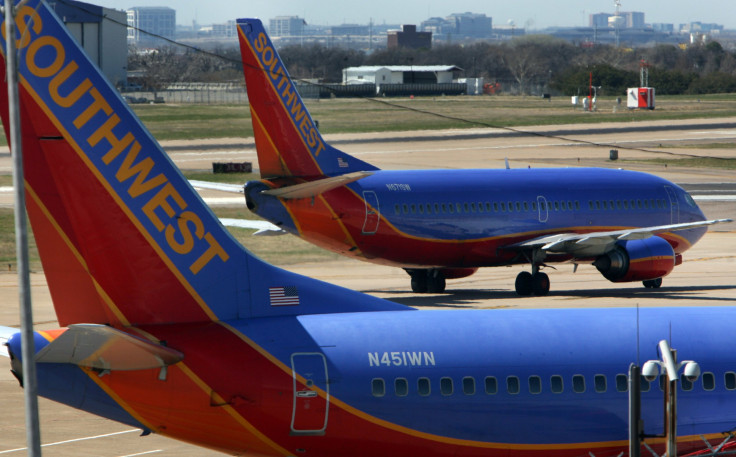Southwest Airlines Cuts Its Forecast Again, But The Pain Is Almost Over

Last month, Southwest Airlines (NYSE:LUV) slashed its outlook for the first quarter, stating that the January government shutdown was having a bigger impact on unit revenue than the carrier had expected.
Since then, Southwest Airlines has suffered further challenges, as a spat with its maintenance staff and the grounding of Boeing's (NYSE:BA) 737 MAX led to a raft of flight cancellations. As a result, the company significantly reduced its Q1 forecast again on Wednesday. However, Southwest indicated that it thinks conditions will improve quickly.
Another big guidance cut
Southwest's initial forecast for the first quarter was quite bullish. The carrier estimated that revenue per available seat mile (RASM) would rise 4% to 5%, despite a roughly 1-percentage-point headwind from the government shutdown and the timing of Easter. Management expected nonfuel unit costs to rise 6% -- because of delays and start-up costs related to launching service to Hawaii, as well as the timing of other expenses -- partially offset by a modest decline in fuel prices. This put the company on track to record solid growth in earnings per share in Q1.
However, last month, management acknowledged that it had underestimated the impact of the government shutdown on Southwest's first-quarter revenue by as much as $50 million. As a result, it revised its RASM growth forecast for the quarter to a range of 3% to 4%.
Southwest Airlines made an even bigger revision to its forecast this week. The carrier noted that it expected to cancel about 9,400 flights between mid-February and the end of March because of the dispute with its mechanics and the grounding of its 34 Boeing 737 MAX aircraft. These unexpected cancellations are dramatically reducing Southwest's capacity growth and pressuring both unit revenue and nonfuel unit costs in the first quarter.
On the revenue side, Southwest Airlines now expects RASM to rise 2% to 3% this quarter. It noted recent softness in leisure demand in addition to the impact of flight cancellations. Meanwhile, nonfuel unit costs are on track to jump 10%. The elevated number of flight cancellations will drive 3 percentage points of that increase, with another 1 percentage point coming from a new tentative contract agreement with Southwest's mechanics.
These guidance revisions suggest that Southwest will report a substantial EPS decline for the first quarter, rather than the double-digit EPS growth implied by its initial quarterly forecast.
Springtime demand still looks good
Fortunately, the news wasn't all bad for Southwest Airlines investors. While the Q1 outlook is fairly gloomy now, Southwest said that it "continues to expect a strong year-over-year RASM performance in second quarter 2019, based on current revenue trends and bookings."
Indeed, an abrupt trend change wouldn't be very surprising. First, Southwest's maintenance-related cancellations should return to normal levels now that the company has agreed to give its mechanics 20% raises. Second, the carrier is starting to be more proactive about trimming its flight schedule to account for the 737 MAX grounding, which may allow it to cancel primarily less-profitable flights. Third, Southwest will face an easy year-over-year comparison next quarter, because of the timing of Easter and the impact of an inflight fatality on its RASM last spring.
Southwest Airlines will face somewhat tougher comparisons in the second half of the year. But on the bright side, there's a good chance that leisure travel demand will be stronger during key travel periods like the summer, Thanksgiving, and Christmas.
The Boeing 737 MAX may fly again soon
The biggest threat to Southwest Airlines' profitability during the remainder of 2019 would be an extended grounding of its 737 MAX fleet. The carrier has 34 Boeing 737 MAX aircraft today, and it is scheduled to receive another 41 by year-end, by which point the 737 MAX would account for nearly 10% of its fleet.
Luckily, Boeing recently announced a number of proposed improvements to the 737 MAX's software, cockpit displays, and training procedures. These fixes still need to gain regulatory approval, but they seem likely to address the vulnerabilities that led to two fatal crashes of 737 MAX aircraft since late October.
Analysts estimate that it may take six weeks to 12 weeks to get the global Boeing 737 MAX fleet off the ground again. That means Southwest will probably be able to return to its full schedule by mid-to-late June at worst: in time for the busy summer travel season.
Southwest Airlines certainly got off to a rough start in 2019. But with shares of the airline giant trading for less than 12 times its 2018 adjusted EPS -- and with plenty of room for both short-term and long-term EPS growth -- this could be a good time to bet on Southwest Airlines stock.
This article originally appeared in The Motley Fool.
Adam Levine-Weinberg owns shares of Southwest Airlines. The Motley Fool owns shares of and recommends Southwest Airlines. The Motley Fool has a disclosure policy.





















